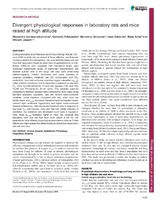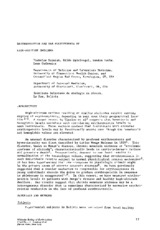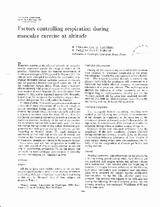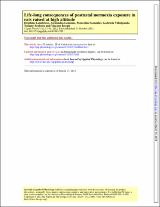ListarProducción científica por tema "RESPIRACIÓN"
Mostrando ítems 1-4 de 4
-
Divergent physiological responses in laboratory rats and mice raised at high altitude
(The Journal of Experimental Biology, 2015-01-29)Abstract. Ecological studies show that mice can be found at high altitude (HA – up to 4000 m) while rats are absent at these altitudes, and there are no data to explain this discrepancy. We used adult laboratory rats ... -
Erythropoietin and the polycythemia of high-altitude dwellers
(Molecular Biology of Erythropoiesis, 1989)Abstract. High-altitude natives residing at similar altitudes exhibit varying degrees of erythrocytosis, depending in part upon their geographical location. A recent report by Winslow et al suggests that hematocrit and ... -
Factors controlling respiration during muscular exercise at altitude
(Federation Proceedings, 1969)Previous papers on the effect of altitude on muscular exercise concerned mainly the energetic aspect of this problem. Moreover, since the classical observations of Zuntz and colleagues, 1906 (quoted by Dejours (4), few ... -
Life-long consequences of postnatal normoxia exposure in rats raised at high altitude
(J Appl Physiol., 2012)Abstract. We tested the hypothesis that exposure of high-altitude (HA) rats to a period of postnatal normoxia has long-term consequences on the ventilatory and hematological acclimatization in adults. Male and female HA ...




